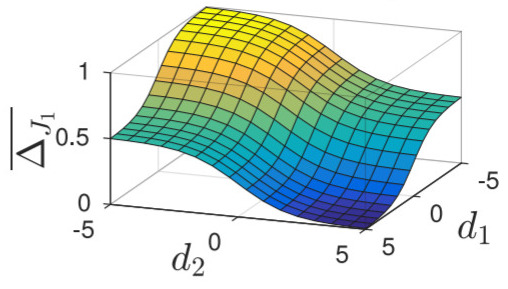https://github.com/bermanmaxim/lovaszsoftmax
Code for the Lovász-Softmax loss (CVPR 2018)
https://github.com/bermanmaxim/lovaszsoftmax
image-segmentation loss-functions neural-networks pytorch
Last synced: 3 months ago
JSON representation
Code for the Lovász-Softmax loss (CVPR 2018)
- Host: GitHub
- URL: https://github.com/bermanmaxim/lovaszsoftmax
- Owner: bermanmaxim
- License: mit
- Created: 2018-02-21T09:11:59.000Z (over 7 years ago)
- Default Branch: master
- Last Pushed: 2024-04-12T21:01:35.000Z (over 1 year ago)
- Last Synced: 2025-04-08T08:15:52.355Z (3 months ago)
- Topics: image-segmentation, loss-functions, neural-networks, pytorch
- Language: Jupyter Notebook
- Homepage: http://bmax.im/LovaszSoftmax
- Size: 2.06 MB
- Stars: 1,388
- Watchers: 31
- Forks: 270
- Open Issues: 18
-
Metadata Files:
- Readme: README.md
- License: LICENSE
Awesome Lists containing this project
README
# The Lovász-Softmax loss: A tractable surrogate for the optimization of the intersection-over-union measure in neural networks

Maxim Berman, Amal Rannen Triki, Matthew B. Blaschko
ESAT-PSI, KU Leuven, Belgium.
Published in CVPR 2018. See [project page](http://bmax.im/LovaszSoftmax), [arxiv paper](https://arxiv.org/abs/1705.08790), [paper on CVF open access](http://openaccess.thecvf.com/content_cvpr_2018/html/Berman_The_LovaSz-Softmax_Loss_CVPR_2018_paper.html).
## PyTorch implementation of the loss layer (*pytorch* folder)
**Files included:**
* **lovasz_losses.py**: Standalone PyTorch implementation of the Lovász hinge and Lovász-Softmax for the Jaccard index
* **demo_binary.ipynb**: Jupyter notebook showcasing binary training of a linear model, with the Lovász Hinge and with the Lovász-Sigmoid.
* **demo_multiclass.ipynb**: Jupyter notebook showcasing multiclass training of a linear model with the Lovász-Softmax
The binary `lovasz_hinge` expects real-valued scores (positive scores correspond to foreground pixels).
The multiclass `lovasz_softmax` expect class probabilities (the maximum scoring category is predicted). First use a `Softmax` layer on the unnormalized scores.
## TensorFlow implementation of the loss layer (*tensorflow* folder)
**Files included:**
* **lovasz_losses_tf.py**: Standalone TensorFlow implementation of the Lovász hinge and Lovász-Softmax for the Jaccard index
* **demo_binary_tf.ipynb**: Jupyter notebook showcasing binary training of a linear model, with the Lovász Hinge and with the Lovász-Sigmoid.
* **demo_multiclass_tf.ipynb**: Jupyter notebook showcasing the application of the multiclass loss with the Lovász-Softmax
*Warning: the losses values and gradients have been tested to be the same as in PyTorch (see notebooks), however we have not used the TF implementation in a training setting.*
## Usage
See the demos for simple proofs of principle.
## FAQ
* How should I use the Lovász-Softmax loss?
The loss can be optimized on its own, but the optimal optimization hyperparameters (learning rates, momentum) might be different from the best ones for cross-entropy. As discussed in the paper, optimizing the dataset-mIoU (Pascal VOC measure) is dependent on the batch size and number of classes. Therefore you might have best results by optimizing with cross-entropy first and finetuning with our loss, or by combining the two losses.
See for example how the work [*Land Cover Classification From Satellite Imagery With U-Net and Lovasz-Softmax Loss* by Alexander Rakhlin et al.](http://openaccess.thecvf.com/content_cvpr_2018_workshops/w4/html/Rakhlin_Land_Cover_Classification_CVPR_2018_paper.html) used our loss in the [CVPR 18 DeepGlobe challenge](http://deepglobe.org/).
* Inference in Tensorflow is very slow...
Compiling from Tensorflow master (or using a future distribution that includes commit [tensorflow/tensorflow@73e3215](https://github.com/tensorflow/tensorflow/commit/73e3215c3a2edadbf9111cca44ab3d5ca146c327)) should solve this problem; see [issue #6](https://github.com/bermanmaxim/LovaszSoftmax/issues/6).
## Citation
Please cite
```
@inproceedings{berman2018lovasz,
title={The Lov{\'a}sz-Softmax loss: A tractable surrogate for the optimization of the intersection-over-union measure in neural networks},
author={Berman, Maxim and Rannen Triki, Amal and Blaschko, Matthew B},
booktitle={Proceedings of the IEEE Conference on Computer Vision and Pattern Recognition},
pages={4413--4421},
year={2018}
}
```